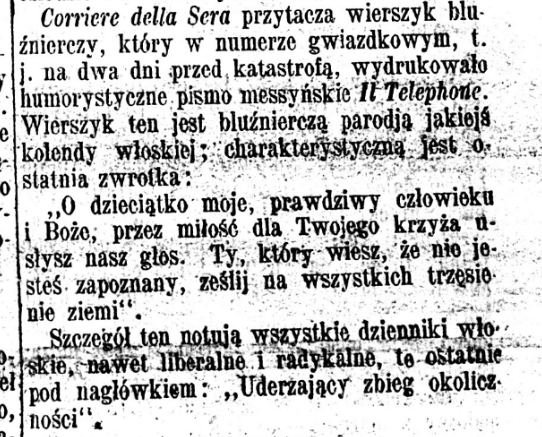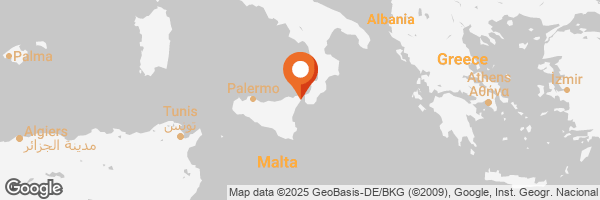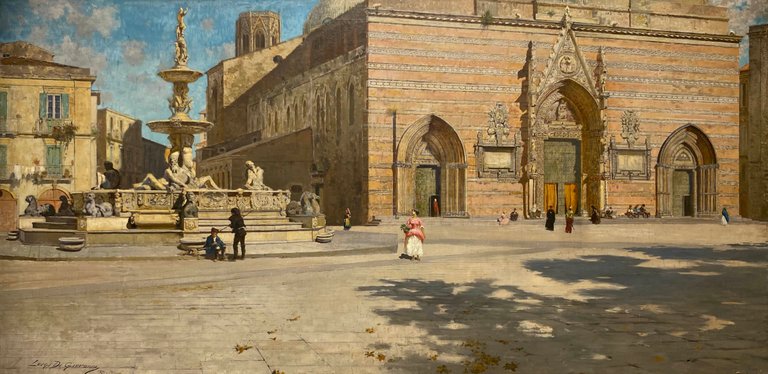
Ten obraz z Muzeum Okręgowego w Mesynie można łatwo przeoczyć, bo najważniejszą jego atrakcją są obrazy Caravaggia i świetna kolekcja sztuki średniowiecznej. Jest on ciekawy nie tylko dlatego, że pokazuje jak bardzo bliskie związki łączyły Aleksandra Gierymskiego z malarstwem włoskim (myślę, że gdyby ten obraz pojawił się na polskim rynku ze zmienioną sygnaturą na Gierymskiego wielu by się nabrało), ale także dlatego że pokazuje widok najważniejszego miejsca w Mesynie przed trzęsieniem ziemi, które w 1908 roku obróciło miasto w gruzy i kosztowało życie ponad 80 tysięcy jego mieszkańców. Dziś to miejsce wygląda prawie dokładnie tak samo jak na tym obrazie (poza tym, że fontannę otacza paskudny płot, a właściciwe dwa płoty, ale ten starszy nie razi tak bardzo)
This painting from the Regional Museum in Messina can easily be overlooked, as the main attractions there are Caravaggio's paintings and a great collection of medieval art. It is interesting not only because it shows the close ties between Aleksander Gierymski and Italian painting (I think if this painting appeared on the Polish market with Gierymski's signature, many would be deceived), but also because it shows the view of the most important place in Messina before the earthquake that in 1908 turned the city into ruins and cost the lives of over 80,000 of its residents. Today, this place looks almost exactly the same as in this painting (except that the fountain is surrounded by an ugly fence, and the proper two fences, but the older one is not as offensive).
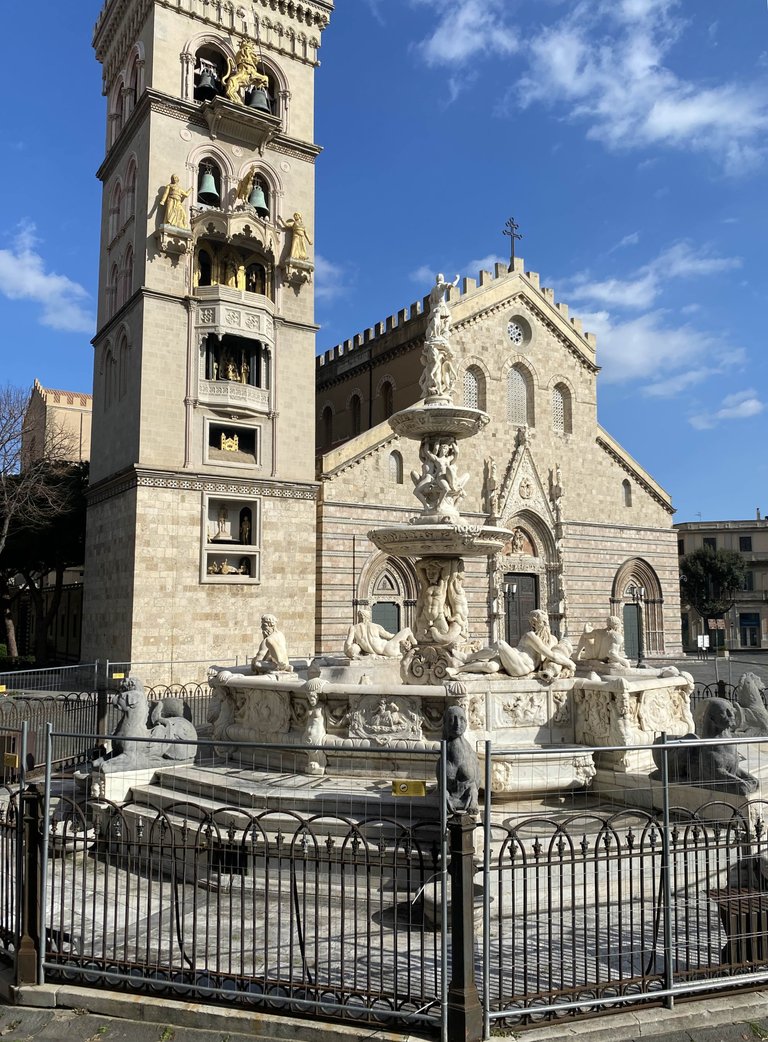
Fontanna przetrwała trżęsienie ziemi ale katedra została w dużej części zburzona najpierw przez trzęsienie a potem przez bobardowanie miasta w czasie II wojny światowej. Podobnie podczas trzęsienia ziemi została zburzona dzwonnica. Odbudowano ją i umieszczono w niej wykonany w 1933 przez Theodore'a Ungerera ze Strasburga niezwykły zegar astronomiczny.
The fountain survived the earthquake, but the cathedral was largely destroyed first by the earthquake and then by the bombing of the city during World War II. Similarly, the bell tower was destroyed during the earthquake. It was rebuilt, and in 1933 an extraordinary astronomical clock made by Theodore Ungerer from Strasbourg was placed in it.
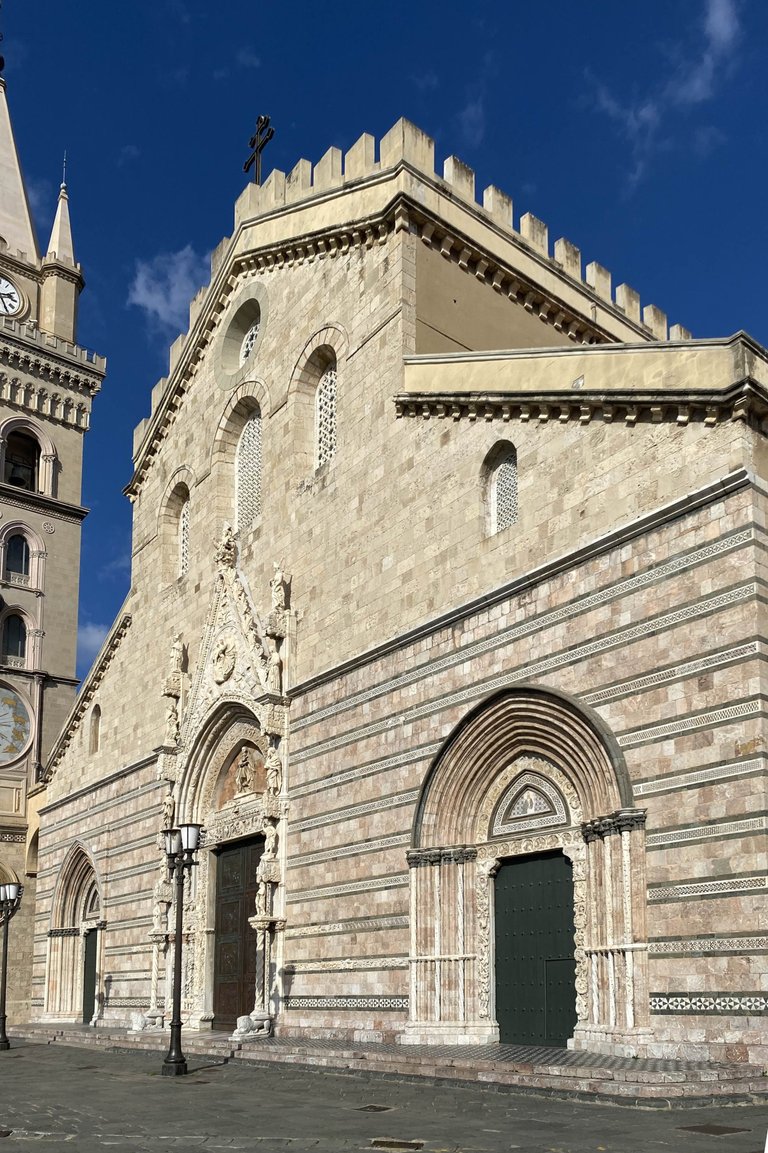
Historyk włoskiego Renesansu Bernard Berenson uznał fontannę Oriona za najpiękniejszą renesansową fontannę i rzeczywiście, jest to dzieło wyjątkowe.
The Italian Renaissance historian Bernard Berenson considered Orion's Fountain to be the most beautiful Renaissance fountain, and indeed, it is a unique work.
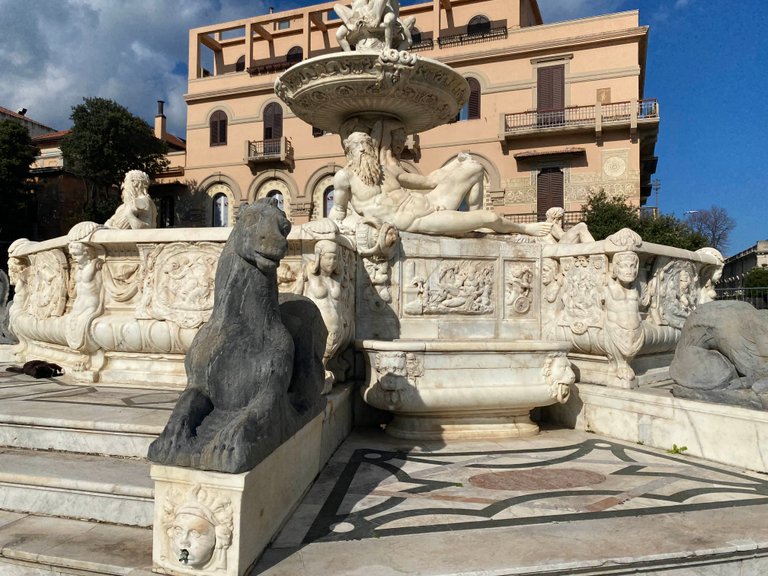
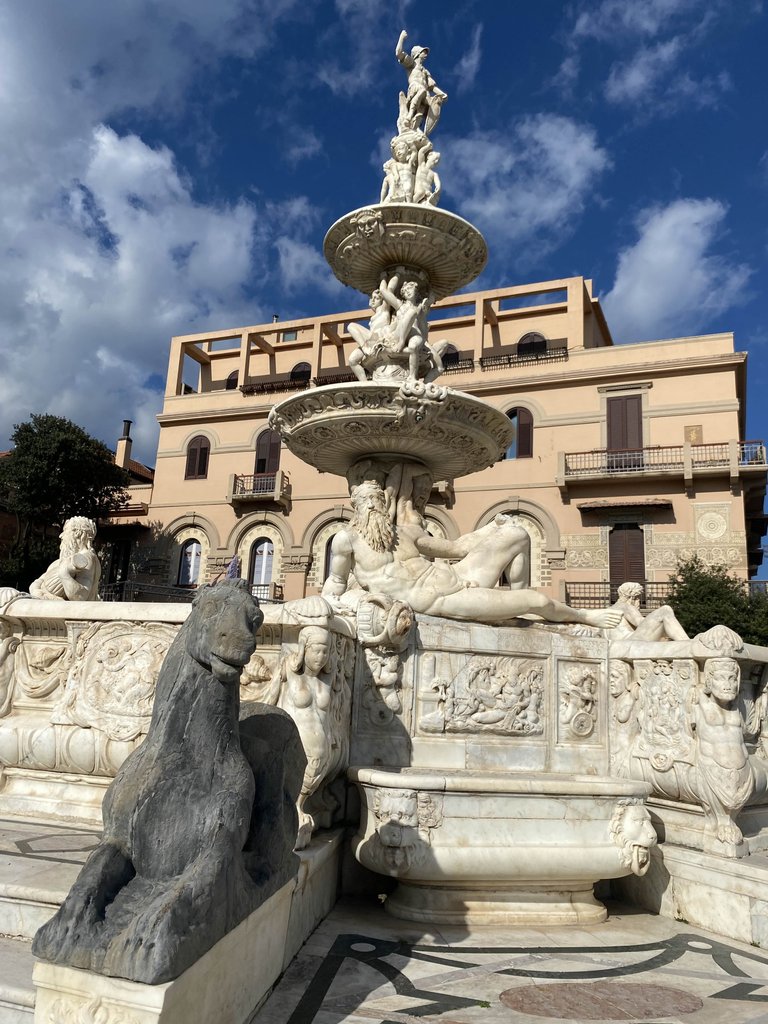
Trzęsienie ziemi w Mesynie, o którym poza nią pewnie mało kto dziś pamięta było szeroko opisywane w europejskiej prasie. „Kurier Polski” z 13 stycznia 1909 roku przytoczył z tej okazji takie zastanawiające wydarzenie.
The earthquake in Messina, which probably few people remember outside of it today, was widely reported in the European press. "Kurier Polski" from January 13, 1909, quoted such a fascinating event on this occasion.
